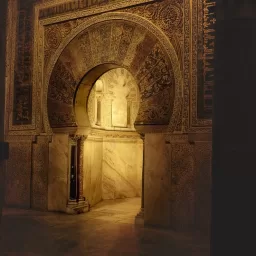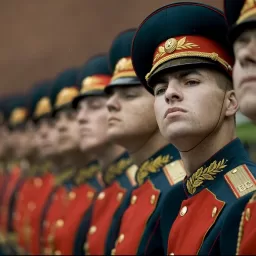
1950s Hairstyles
1950s hairstyles emphasized traditional gender roles. While women’s hair was long, curled and high maintenance, men wore their hair in short, military-like cuts, or pulled down and away from the face. Men’s hair that touched the ears went against the grain, and was even illegal in some parts of the U.S.
Film stars like Elizabeth Taylor, Lauren Bacall, and Marilyn Monroe all wore curly updos, while famous men like James Stewart, Cary Grant and President Dwight Eisenhower wore their hair in short, severe cuts. Younger men had a bit more latitude, but not much more; some emulated James Dean and Elvis in growing a pompadour or pompadour-like haircut.
For women in the 1950s, hair required a lot of work. If your hair was straight, the simplest way to curl it was to wear many small hair curlers (and/or rollers) in the hair, and then let them set over the course of hours, or even a night’s sleep. Women could also go to the hairdresser and get a permanent, which would chemically set the curls in their hair until it grew out or (with some processes) grew slack with washing. Bangs were very popular among women; women even curled them to match the rest of their hair.
For African-American women, their naturally kinky or nappy hair was looked down on. Many women had their hair chemically straightened, or relaxed, while African-American men kept their hair short. 1950s hairstyles for African Americans reflected the popular styles of the day, with the limitations that came with relaxed hair.
As the 1950s progressed, women’s hairstyles grew in volume, and stylized waves waned in favor of larger hairstyles, like beehives. These required hairspray and blow-drying to maintain their volume.
Debbie Reynolds in I Love Melvin. In the 1950s, curly hair was in fashion.The 1950s saw the invention of the hair dryer. Unlike the hand-held hairdryers of today, a 1950s hair dryer was a large cap, attached by a large tube to a heater. The cap went over the head; when the heater was plugged in and turned on, heat went through the tube and into the cap. This was, essentially, a home version of the big, conical hairdryers you would see at a salon.
Handheld hairdryers, and curling tongs, became more popular in the late 1950s. Handheld hairdryers offered less precision for the average user, but could make the hair higher and bigger.
For men, electrical shavers also grew more popular in the 1950s. Men started shaving themselves instead of going to the barbershop; this also allowed their hair to become even shorter in the back, leading to the iconic “flat-top” hairstyle of a very short back with longer hair on the crown of the head.
1950s hairstyles for men were limited to the flat-top or pomaded hair combed away from the forehead. Adventurous young men would go for a pompadour or a quiff, a combination flat-top and pompadour haircut. The D.A. (duck’s ass) haircut was popular among young men, though it was frowned upon by more traditional members of the community.
Both men and women wore short hair. Due to the high maintenance of the curled look, many women with straight hair kept their hair at jaw or shoulder-length. As far as I know, it was very rare to see grown men with mop tops, or “bowl cuts,” during the 1950s. Even young boys imitated their elders with short hair.
A few young women, such as teddy girls and butch lesbians, went for a more androgynous or masculine look. In the 1950s this was very rare and even risky: a masculine hairstyle on a woman could get her arrested or assaulted for supposed homosexuality, then looked at as a perversion.
This article originally appeared in Enjoy Your Style’s Vintage Styles section.
Slack
#1950s #Hairstyles
Will be pleased to have you visit my pages on social networking .
Facebook page here.
Twitter account is here.
Linkedin account here
Post byBedewy for info askme VISIT GAHZLY








